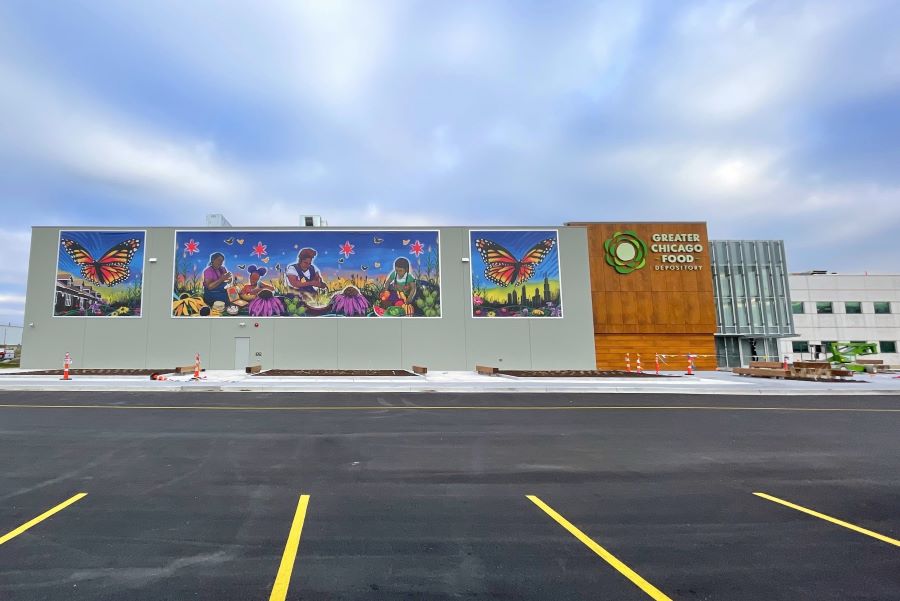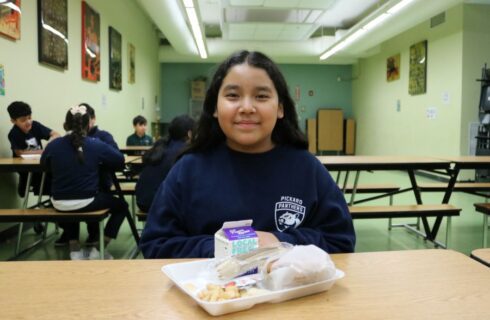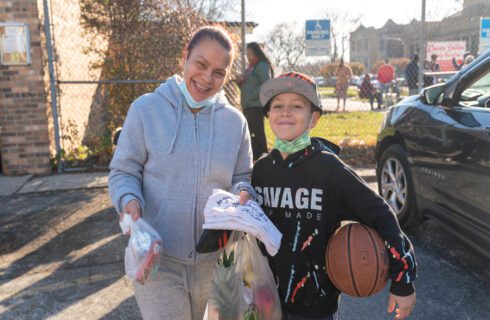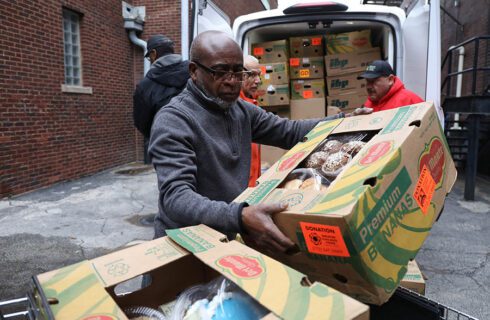When you look at the new mural on the Greater Chicago Food Depository’s headquarters, artist Mario Mena hopes you notice the “magic” flowing through it.
The “magic” he describes is represented as a golden glow, spreading across the length of the mural. “That glow is meant to represent magic because I see food as magic,” Mena said.
“What makes food amazing is the love and the magic that is put into it. The way food brings people together is magic.”
Mena, a local artist, was commissioned by the Food Depository to create the mural for the new building expansion, to showcase the vibrancy of the greater Southwest side community and the talent of local artists. In doing so, we wanted to engage an artist with ties to the surrounding neighborhood.

Artist Mario Mena, in front of one of his many murals across Chicago.
Mena grew up in nearby Brighton Park and attended Curie High School just down the street from the Food Depository, where he developed his love of art. He immigrated to California from Mexico with his parents when he was just two years old, and they moved to Chicago five years later. His story is not unlike that of many Chicagoans, whose families came to the city for a better life.
Mena has worked for years to beautify the city through murals, and is now a teaching artist, working with kids on the Southwest side through Yollocalli Arts Reach, a youth arts program. Given his ties to the neighborhood the Food Depository has called home for 40 years, Mena was the perfect artist for this opportunity.
When considering the prompt, “Chicago’s Community Kitchens,” Mena wanted to find a way to represent not only his experience of Chicago, but Chicago as a whole.
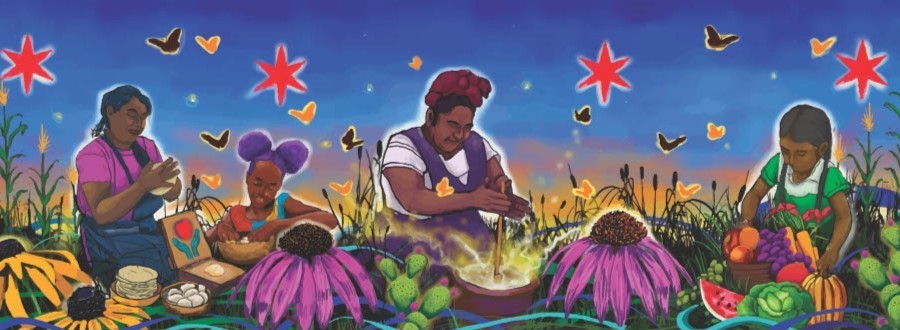
The center panel of Mena's design, featuring his signature vibrant, colorful style.
He started at the center of the design, which features a woman stirring what he calls a “melting pot,” a nod to Chicago’s reputation as a melting pot of different cultures, languages and ethnicities.
“For me it could represent atole, champurrado or hot cocoa,” he says, referencing traditional Mexican drinks, “but it could also represent many different things to everybody else in the city of Chicago.”
Starting from the melting pot, the “magic” glow extends all the way to the outer left and right panels, which represent two different sides of Chicago.
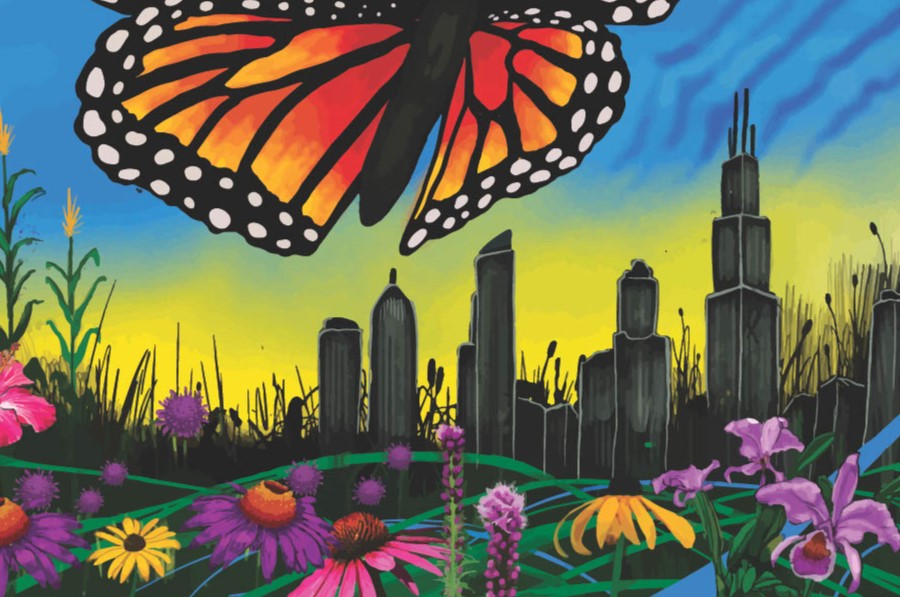
The right side of Mena's mural, featuring the Chicago skyline.
The right side shows Chicago’s iconic skyline and represents the side of Chicago that is known to the world. “Everyone in Chicago knows the skyline. It’s iconic – it’s something everyone in the city can have pride in,” says Mena.
The left side of the mural depicts a row of bungalows, a building style that rose to popularity in Chicago in the early 20th century as a way for the city’s middle- and working-class people to own a single-family home. “They represent the side of Chicago not everyone gets to see,” Mena says.
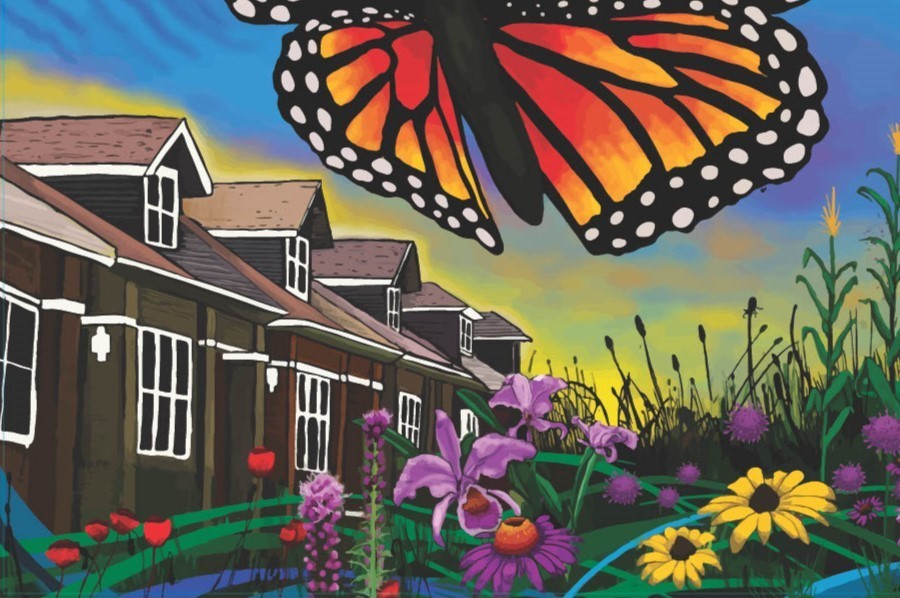
The left side of Mena's mural, featuring the traditional Southwest side bungalows.
“The bungalow, to me, is the best representation of the Southwest side. Growing up, we all lived in bungalows. It didn’t matter what race you were. We were all blue-collar workers – Polish, South American, Mexican – but we all had that in common. When I travel somewhere and I come back, and I see the rows of bungalows as I’m flying back to Midway, I know I’m home.”
Mena hopes his mural will resonate with anyone who comes across it.
“I wanted to create something beautiful and flowing. When people see the design and all the little symbols, I hope they feel represented and like somebody thought about them,” he said.
His mural will live on the front-facing façade of the Food Depository’s headquarters for the next year, when the Food Depository will select another artist to create a new mural, continuing the tradition of capturing the essence of Chicago's food culture through the lens of local artists.
Watch Mario explain his work in his own words:
Share This Post

